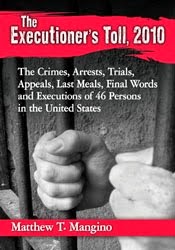LOUISVILLE, Ky. NBC
NEWS— This is a city under siege.
Homicides — particularly deadly shootings — have piled up
with no clear end in sight.
The city had reported 125 homicides as of Sunday and is in
danger of breaking its homicide record for a second consecutive year.
Roughly 65 percent of this year’s killings have gone
unsolved, a sharp change from just three years ago when about 39 percent of
killings were not resolved.
Louisville's current 34 percent solve rate falls far short
of the 61.4 percent national average in 2019, the last year
for which FBI data is available.
Louisville is one of several major U.S. cities grappling with a surge of violent crime over the past
year and a half.202102:14
City officials and the Louisville Metro Police Department
say they are working to find solutions and trying to regain control
of the climbing homicide numbers and the woeful case-closure rate.
The city, for instance, has nearly quadrupled its investment
in efforts to tackle violent crime by pumping money into officer recruitment,
community outreach and social service programs.
But the mayor and others say progress, so far, has been
stymied by myriad factors including easy access to guns, a shrinking police
force and officers reluctant to carry out their duties because of increased
scrutiny.
What’s more, the police killing of Breonna Taylor in March 2020
exacerbated issues of community mistrust of police, and a pending Justice Department investigation suggests
there may be long-standing problems within the department.
Louisville Metro Police Chief Erika Shields, through her communications
team, declined several requests for interviews.
During the inaugural episode of the police department’s
podcast “On the Record,” she acknowledged the crime surge and said shootings
“have to stop.”
“The pace at which we’re seeing these shootings is
absolutely unacceptable,” Shields said.
Citywide slayings pierced the life of Marcus Collins, whose
17-year-old stepson, LaMaurie Gathings, was killed June 4.
"It’s really taken a toll on my wife. I’m here trying
to hold it together," Collins said.
Sometime past 2 a.m., Gathings snuck out of the house to
meet with his cousin.
A short while later, possibly after leaving a party,
relatives said, Gathings was fatally shot. His cousin was shot three times,
once in the neck, but survived.
“I still haven’t heard nothing. I haven’t heard anything
about what happened or from the detective at all. It’s been a month,” Collins,
43, said.
Louisville police haven't arrested or charged anyone for
Gathings’ killing.
“The police aren’t doing a good job investigating,” Collins
said, adding that officers have told the family they don’t have enough
resources to adequately investigate.
This points to a larger hurdle for the city: solving homicides.
Louisville is among several U.S. cities experiencing a high
volume of homicides recently. The nation’s murder rate was up nearly 15 percent
last year, according to a preliminary FBI report released in September.
It’s difficult to pinpoint the cause of the killings
nationwide.
Some experts have said existing issues like rising gun
ownership, poor relationships between police and citizens and socioeconomic
inequality became worse during the pandemic and the 2020 calls for racial
justice.
In Louisville, Mayor Greg Fischer attributes the number of
homicides to easy gun access, social media beefs morphing into deadly street
violence and a culture of retaliation.
“Anyone can walk down the street with an assault rifle. Guns
are everywhere,” the mayor said.
Shields has stopped short of criticizing her officers but
said on the department's podcast that officers could help prevent homicides by
being more confident while on duty.
“It’s getting officers to feeling confident and knowing they
can be proactive. I need them to be proactive. I need them to be making
arrests,” the chief said on the podcast, which was posted to the police
department’s YouTube page in June.
A January report commissioned by the
Louisville-Jefferson County Metro Government said Louisville officers may be
experiencing low morale.
Officers who responded to a survey expressed concern about a
lack of support and leadership from upper management and the community, resulting
in many of them wanting to leave the department, according to the report, which
was conducted by Hillard Heintze, a Chicago consulting firm.
Shawn Butler, executive director of the Kentucky Association
of Chiefs of Police, said low morale doesn’t incentivize officers to do more
than bare-minimum work.
“I think low morale is an occupational hazard. You aren’t
going to do your job as effective,” Butler said. “It doesn’t help when we’ve
had the civil unrest that we’ve had.”
Howard Henderson, a nonresident senior fellow at The
Brookings Institution, a nonprofit public policy organization based in
Washington, D.C., said more focus needs to be placed on why morale is low.
“It’s bad for the system to have officers with low morale.
The lower the morale, the worse the job performance,” Henderson said. “The
question really needs to be why is morale low? Is it that morale is low because
people are being held accountable for the first time? Morale might be low for a
good reason.”
The police department is short about 240 police officers,
many of whom have retired or taken jobs elsewhere, city officials said.
As it stands, 1,048 officers make up the current Louisville
police force, compared with 1,247 at the beginning of 2019, police records
show.
That includes the 43 officers added this year either through
recruitment or rehiring. That number is lower than in each of the last three
years, records show.
Police officials say officers typically investigate four to
five homicides per year, but they are now working eight to 10.
“It’s very difficult when you’re catching a homicide case
every two weeks,” Lt. Donny Burbrink, the commander of the LMPD homicide unit,
said during an LMPD podcast episode. "We’re having a very difficult time
right now. If I pick up a homicide today, at the rate we’re on right now, in
two weeks I’ll pick up another homicide.”
LMPD has been so short-staffed that last year the department
pulled several officers from their regular beats to investigate homicides.
“When you put more cases on a homicide detective, that means
there’s only so many interviews and investigations they can do in a 24-hour
time,” said Henderson, who is also director of the Center for Justice Research
at Texas Southern University. “That means there are cases they aren’t going to
even get to or they spend fewer hours working a case.”
Meanwhile, families left to grieve their slain children say
the homicides must stop.
“Living in Louisville
is terrible,” said Delisa Love, 44, whose 19-year-old daughter, Kelsie Small,
was killed hours before Mother’s Day last year. Small was a sophomore nursing
student at Northern Kentucky University.
Love said her 21-year-old nephew survived being shot in
June. She said she also lost a 17-year-old nephew to gun violence in 2006. “I’ve
never seen so much violence,” Love said.
Louisville police confirmed nobody has been arrested in
connection with Small's death.
Collins, whose son was killed earlier this summer, wants to
know why more homicides aren’t being solved.
“My son was a good kid, just hard-headed. He didn’t have a
criminal record,” Collins said.
Officials and residents say witnesses not bringing forth
relevant information regarding homicides has stifled police efforts.
“I’m convinced it’s unusual for a homicide to take place and
someone not know who did that,” Fischer said. “There’s going to be zero
tolerance for gun crime, violent crime and homicides.”
That would require overcoming the broken relationship
between police and members of the community, particularly people of color.
LMPD is currently under investigation by the Justice Department to determine
whether officers engage in a “pattern or practice of violations of the
Constitution or federal law.”
The investigation was announced in April, more than a year
after officers killed Breonna Taylor in her apartment as they served a
“no-knock” warrant. No criminal charges were brought in direct connection with
Taylor’s death.
The shooting inflamed racial tensions in the city, prompted
calls for police reform and led to numerous protests and the hiring of Shields as police chief.
“There’s no trust at some level. And when there’s no trust,
you can’t get things accomplished in a collaborative way,” Louisville activist
Christopher 2X said. “Most people don’t want to participate in any way or be
connected to a violent crime through a judicial process.”
He added that when people think about feeling protected
versus giving the police relevant information, they conclude it’s not worth it.
To read more CLICK HERE







